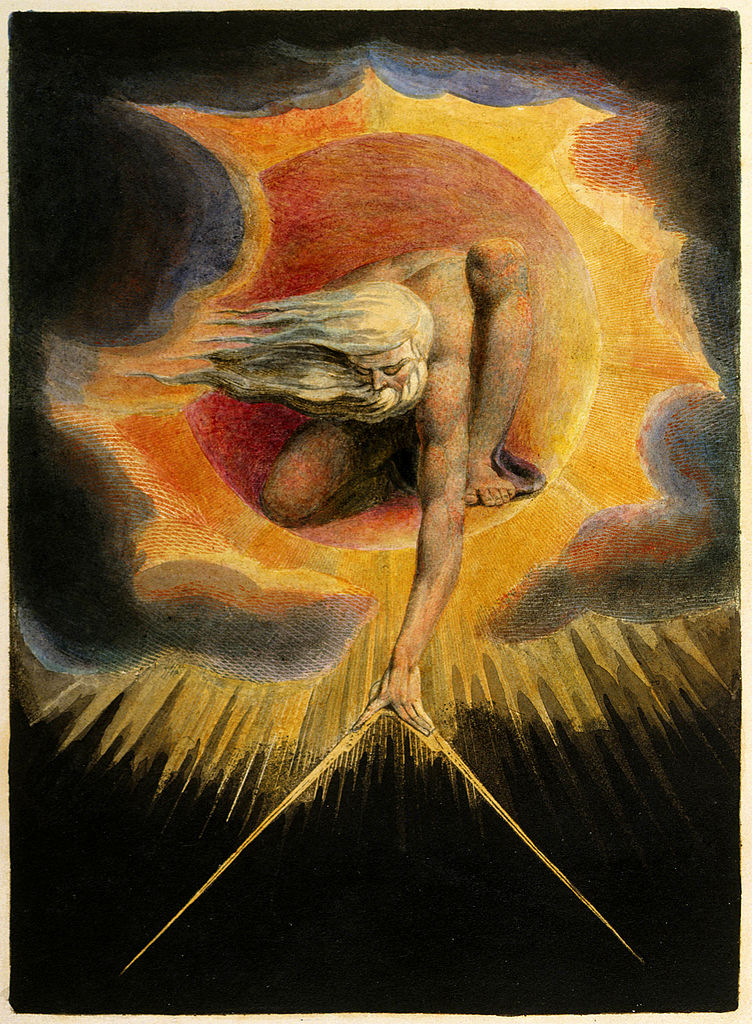
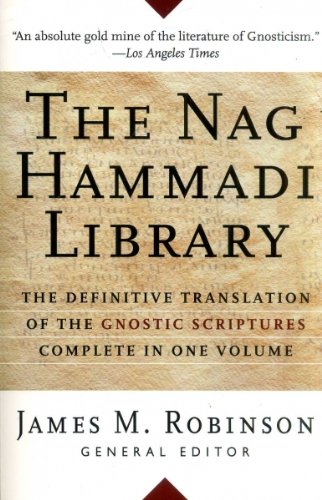

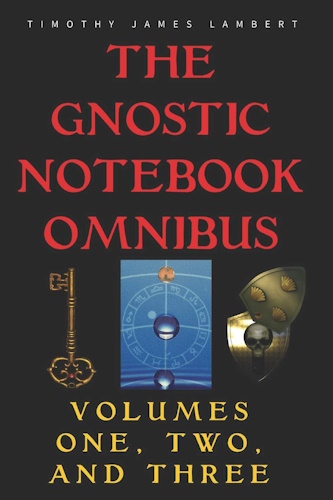

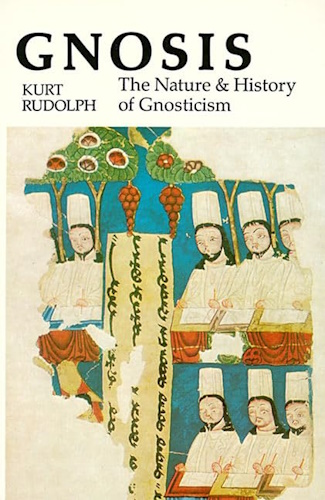



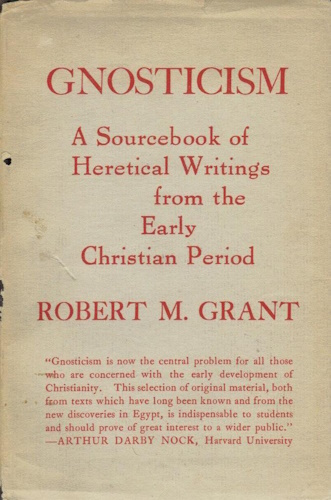

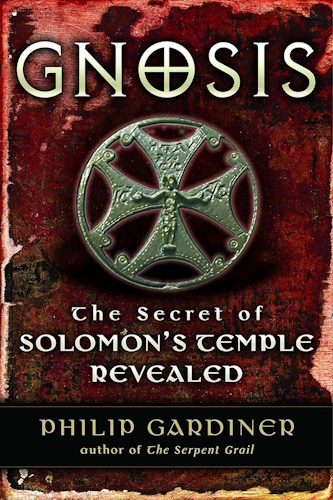



![]()
![]()
3 - The Holy Grail
montalk.net 28 October 10

In my previous article, I explained how the Philosopher's Stone is an actual object manufactured through the principles of low demiurgic technology, better known as Alchemy. I call it "demiurgic technology" because it employs the energies of the Demiurge — etheric and astral energies — to reshape matter at the quantum level, and "low" because the Stone's reach of influence is localized: it can only transform the lead or mercury it is cast into, and can only biologically regenerate the individual who ingests it.
In this article and the next, I will discuss two examples of high demiurgic technology: the Holy Grail and the Ark of the Covenant. Both operate on the same principles as the Philosopher's Stone, just taken to a higher degree of power and sophistication and having a more global reach.
The Grail is an object with supernatural powers brought to our world by otherworldly forces. The Ark of the Covenant was a container constructed by ancient Hebrews, during their flight from Egypt, to house a powerful artifact.
Since descriptions of the Ark's capabilities closely parallel those of the Grail, what the Ark contained may have been the Grail. As to their ultimate purpose, both the Grail and Ark were generally portrayed as physical embodiments of a god-like intelligence.
The Grail subject has several complementary aspects: 1) The technology. What it is, and what it does. Its physical nature, function, and purpose. 2) The history. The events that lead to its creation and introduction to our world. Who is responsible for it. What it has done, and will do, to our world. 3) The spiritual metaphor. What it represents within all of us. What is indicated about a proper course of spiritual development.
I will explore these in sequence over the coming articles, reserving the spiritual aspect for last because it concerns the solution to a problem I have yet to delineate. If it seems like I'm getting hung up on the technology, it's only because I find it a prerequisite for understanding the reasons behind the historical aspect, which then underscores the gravity of the spiritual aspect.
I will begin by addressing the functional characteristics of the Grail and in my next article follow up with those of the Ark. From this, it will become clear how competition over, and the abuse of such immense power can, has, and will have catastrophic consequences for our world.
Medieval Literature Describes the Grail
The original Grail legends preceded Christianity. Later the Church retrofitted these pagan tales with Biblical symbolism and context. From that retrofitting we get the popular notion that the Holy Grail was the cup from which Jesus Christ served wine at the Last Supper, which later caught his blood as he died on the cross, or the notion that it was a platter carrying the decapitated head of John the Baptist.
Of all medieval authors who wrote of the Grail, Wolfram von Eschenbach seemed most privy and sympathetic to the pagan/gnostic stream of Grail lore. He was a wandering knight, scholar, poet, and singer — the German equivalent of troubadour — who associated with secret societies like the Templars or was a member himself. In his book Parzival, he tells the tale of a foolish boy named Parzival who leaves home to become a knight. This boy is destined to become Grail King but out of timidity fails miserably when eventually offered the opportunity. Cursed for his failure, he spends several years in utter dejection undergoing numerous hard trials before developing the inner strength to fight for his destiny regardless of the failure. And only by this inner resolve and being true to his Self does he earn his second chance and finally become Grail King.
Embedded within this plot are periodic references to the Grail, its origins and functions. These are set within a Christian context that, upon closer inspection, disguise a more Gnostic, pagan, pre-Christian core. In other words, Wolfram may have had the inside scoop on the Grail and inserted what heretical truths he could between the obligatory religious veneer, as is evident from the odd details pertaining to the Grail that fit poorly within Biblical context.
That is not to say the other Grail books are worthless, because their retrofitting occasionally kept the original meaning relatively intact. For instance, if Jesus Christ was the incarnation of a personified extension of the Logos, which is the spiritualized aspect of the demiurge, then you can see how a cup holding his blood is identically a physical vessel holding demiurgic energy. You have already encountered one example: the Philosopher's Stone, of which the Grail is a higher order relative. Or consider the platter holding the head of John the Baptist; John poured "living water" upon Jesus and baptized him, indicating his symbolic function as the conferrer of that which made Jesus more than mere man, that is to say he symbolized the Logos, and "Logos" being associated with mind/intellect may explain the head-on-a-platter visual. These are examples of ecclesiastical steganography.
In Wolfram's Parzival, the Grail was neither cup nor platter, but an otherworldly stone. It was called neither "Holy Grail" nor "Holy Vessel" but simply the "Graal." It was treated as a strange and marvelous non-terrestrial artifact. To avoid redundancy, I will call it "Grail" instead of "Graal." Here is how Wolfram characterizes it:
- It was paradisal and transcended all earthly perfection. This implies it was more than just a hunk of rock. Rather its perfection extended beyond the earthly material level.
- It was cared for by a woman of perfect chastity and purity, and all who served the Grail must forego carnal love. This means spiritual integrity was of vital importance for those who interacted with it.
- It would only let itself be carried or moved by a perfectly chaste woman. This implies it has some level of volition to choose whom to let itself be carried by.
- It would instantly materialize whatever food and drink was desired by those who held their cups and plates before it. This means it could turn thoughts into reality, and functioned as a stone of plenty.
- It could only materialize what the earth already yields in terms of food and drink. This means it cannot just materialize any thoughts, only foodstuffs that already exist. This carries shades of an uncreative demiurge.
- It receives its power to materialize from a Dove that flies down from heaven every Good Friday and leaves a white wafer on the stone. This is a mix of pagan and Christian symbolism. Aside from the religious aspects, it also has to do with raw energy charging the stone at a specified time. Take note that Good Friday is the Friday following the first full moon after the vernal equinox. The date is entirely astrological/astronomical and may signify maximum cosmic etheric inflow.
- It would impart vitality to any who looked upon it, restoring youth, delaying death, and curing illness. One could live for hundreds of years without growing old this way, save for hair turning gray. This means the Grail emits very strong life-force energy, aka etheric energy, just like the Philosopher's Stone.
- It would give written messages via mystical letters appearing on its surface. These letters would vanish after being read. Messages included the names of children in the world who would be called to serve in the Grail castle, and other dictates. This means the Grail possessed intelligence, or relayed communications from some intelligence with preference for letters and writing. It also means the Grail served as an oracle.
- It was invisible to those who were not baptized. This means it takes an infusion of divine energy into one's consciousness, an opening of perception, to be able to see the Grail. Otherwise it remains invisible before one's eyes. This is a very gnostic concept, to have one's third eye opened through divine grace or initiation. It implies the Grail is tangible but not necessarily always fully here in the world, rather shifted slightly from our reality and requires expanded perception to see.
- By its virtue, the Phoenix burns to ashes and is born anew more splendid than before. This metaphor is clearly alchemical symbolism, though more generally it indicates the transformation of something, like a person or whole world, into a more perfect form through dissolution and reformulation.
There is question of how close Wolfram stuck to the original tale, and how close the original was to the truth. Eschenbach says he was told the story by one called Master Kyot, who came across it in an old book written in Arabic by a "heathen" astronomer named Flegetanis. Flegetanis himself was somehow privy to the truth concerning the Grail and its origins, having written, "A troop left it on earth and then rose high above the stars, if their innocence drew them back again. Afterwards a Christian progeny bred to a pure life had the duty of keeping it. Those humans who are summoned to the Grail are ever worthy." Kyot went looking in the literature of Britain, France, and Ireland for mention of this "Christian progeny" and at last found a tale of their existence in Anjou, France, of which the Parzival story is a second-hand recounting by Eschenbach.
Not mentioned by Wolfram, but claimed by other books of the period:
- The Grail could glow bright as the sun and impart enlightenment to those who looked upon it. Recall the Philosopher's Stone glowing when multiplied beyond a certain point, and that its potent etheric energy output assists with psychic activation.
- It was carried by cart or ship from castle to castle instead of being home to just one. This meshes with the Grail leaving a breadcrumb trail from location to location throughout history, from ancient Egypt to medieval France and other places.
- It could unleash a fiery energy surge capable of knocking someone out. The Ark of the Covenant possessed the same trait.
- Only those qualified to wield the Grail could sit in a special seat called the Siege Perilous, all others would be swallowed by a vortex that opens beneath them, should they attempt to sit in that chair. While figuratively underscoring the necessity of utmost spiritual strength and purity in those who seek the Grail, the vortex/whirlpool is a peculiar detail that may stem from a literal observation of the Grail's destructive behavior in the presence of unworthy individuals.
- It was more often in the custody of heavenly beings, who would present it to humans according to circumstance and subsequently withdraw it back into their realm. Sometimes it was in human possession, other times it was retrieved for safekeeping by its otherworldly guardians.
If these latter claims are valid and literal, they don't necessarily contradict Wolfram's account because his primary source concerned events from the time of King Arthur several centuries earlier. In the intervening period more may have happened regarding the Grail from which additional streams of information beside his own could work their way into the books of his time. So I would append these details to the ones provided in Parzival to paint a more complete picture of the Grail.
Taken at face value, in the Grail we have a stone or crystal-like object of variable physicality that emits powerful life-force energy, can translate thoughts into material foodstuffs, has seeming intelligence and volition, functions oracularly, and requires high spiritual integrity from those who wield and serve it lest they be destroyed by it.
Is the Grail Real?
How do we know the Grail is an actual artifact and not just a metaphor for spiritual ideals or a veiled allusion to the Philosopher's Stone?
1) Because its footprints are found in actual history and not just literature. I will leave the tedious history of people like the Phoenicians, Egyptians, Celts, Cathars, and Templars for books listed at the end of this article, but will say for now that for each of these a magical stone or crystal artifact with supernatural qualities played part in their origins, organization, and power. They were at some point in possession of something important, closely guarded, and endowed with the traits of demiurgic technology. It conferred to them special guidance and abilities without which their achievements would not have been possible.
2) Because its characteristics go beyond that of the Philosopher's Stone in a manner suggesting these extra features are not just arbitrary embellishment based on fantasy, but extensions made with logical adherence to the principle of demiurgic science. In other words, if Grail myths simply encoded alchemical knowledge, the described Grail functions would be limited to those of the Philosopher's Stone and anything beyond that would be made up and thus physically implausible. Yet these extensions, like materializing food out of thin air or functioning in an oracular manner, are perfectly plausible and in line with demiurgic science, as will be explained later. The Grail can do what the Stone cannot, but only because those who make the Stone lack the ability to take demiurgic science to the higher level of which the Grail is a product. If the Stone exists, then so ought the Grail by extension of that same science.
3) Because while anyone with the right knowledge and integrity can make the Philosopher's Stone, the Grail was something sought and fought over as if there were only one. It wasn't something that could be made as needed. Therefore it was a unique artifact and not just a recipe. It was a real object carried around via carts, barques, and arks.
4) Because the medieval Grail was the surviving remnant of the ancient Ark of the Covenant, or at least another fruit from the same tree of demiurgic science. The Ark was undoubtedly a real artifact with real powers and not just myth and metaphor, therefore if the Ark of the Covenant with its alleged functions once existed, then the Grail with its purported powers can exist also, for both are of the same caliber.
Although it bears similarity to the Philosopher's Stone, it is not identically the Stone. Although its human seekers must undergo an arduous path of spiritual strengthening and purification to approach and serve it, the Grail is not just a metaphor for spiritual evolution. Although it employs etheric and astral energies in its operation, it is not just a visual metaphor for these energies but a vessel containing and radiating them. It is hyper-dimensional, spiritual, demiurgic technology representing a union of all such interpretations.
What are the origins of the Grail?
As will be shown in a later article, what medieval literature says concerning the origins and characteristics of the Grail deeply correlates with Celtic, Greek, Scandinavian, Persian, Egyptian, Mayan, and Indian mythology. The common origin of these myths explains who brought the Grail to our world many millennia ago: an advanced civilization possessing demiurgic technology. Further clues on their identity is provided by modern alienology, Fortean research, Rosicrucian studies, contactee culture, and quality channeling literature. This suggests not only that the Grail is as important today as it was in ancient times, but that its supernatural progenitors are still with us.
The Grail is a mysterious artifact with supernatural powers. What is such an otherworldly artifact doing in our world? Who made it, where did it come from, and how did it come into human possession? The angles of approach to these questions are diverse: medieval Grail legends, Indo-European mythology, occult literature, and the modern fields of Fortean phenomena and alienology; but they all converge upon the same answer.
In Parzival, the Christian hermit Trevrizent explains how it was brought to earth by a group of "noble and worthy" angels after they were exiled from Heaven for refusing to take sides when Lucifer waged his rebellion. God commanded these neutral angels to bring the Grail to earth and entrust it to a divinely appointed line of spiritually pure humans. That is to say, they were exiled and divested of the Grail. They are the so-called Fallen Angels.
As to what became of these exiled angels, Flegetanis said they "rose high above the stars" after dropping off the Grail. Trevrizent seems to concur, initially saying they returned to Heaven if their innocence called them to return and God willed it, which is a Gnostic concept concerning the redemption of evil, something the Church would find offensive since Fallen Angels were supposed to be eternal enemies of God without possibility of redemption. Later in the book, Trevrizent admits this was a lie and that these exiled angels were actually eternally damned and eternal enemies of God and his appointed Grail guardians, that they had no hope for redemption. This recanting is thought to have been Wolfram appeasing the Church.
It's also possible that in the original streams from which the story of Parzival was derived, both are true: the neutral angels polarized into two groups, one rising closer to divinity, the other falling further. Some would therefore be higher guardians of the Grail cooperating with their human counterparts, while the others, having been fully divested of the Grail, would be their adversaries desiring to regain it for themselves. This would resolve the seeming contradictions in Grail legends concerning otherworldly beings both helping guard it from abuse and attempting to steal it from its rightful guardians. Thus the legends suggest that a duality exists among these higher beings. For instance, in Lucifer's Court, (p. 21) Otto Rahn recounts a variation of the tale: the Grail was a gemstone knocked loose from Lucifer's crown during the fall of the angels, which his forces have since been trying to repossess.
Stripping the religious gloss from the above accounts, the basic story is that some catastrophe in another realm forced a group of beings to leave with a powerful artifact. They came to Earth and entrusted it to a line of spiritually elite humans through whom the artifact continued its function.
Wolfram called it lapsit exillis, meaning "stone of exile" in his garbled Latin, because it was taken from its home and brought to earth by forces exiled by some cataclysmic event. This motif repeats itself throughout human history, whereby the artifact is endangered and must be moved to a new location. There it establishes its power for some time before peril strikes once more, forcing another relocation, and the cycle repeats.
One example is the Israelites fleeing Egypt under catastrophic conditions and taking the early Ark of the Covenant with them, through which they win victory, guidance, prosperity, and power. When the Temple of Solomon was sacked, the Ark was spirited away and disappeared from Jewish history. I will discuss the Ark in more depth in my next article because it gives further insight into the nature of demiurgic technology and introduces the historical turn of events that precipitated a negative deviation of the timeline.
To be continued…
The above is just a quick introduction to the Grail subject. I have much more to say about the historical and mythological context of the Grail, but these issues will be covered in subsequent articles while the main premise of my Gnosis series continues to build.
Next, I will address the technical aspects of the Ark of the Covenant, to show how they parallel those of the Grail. Putting the two together, we may arrive at a basic understanding of High Demiurgic Technology and what it can do.
Further Reading
The Mystery of the Grail (Inner Traditions, 1997) – by Julius Evola. Erudite and dense, but it practically spells out the meaning of the Holy Grail from an esoteric initiatory point of view. Evola provides numerous data points, which you can interpret from other perspectives.
Revelation of the Holy Grail (Lulu, 2007) – by Chevalier Emerys. Easy to read and informative introduction to the Grail subject. The author is affiliated with modern fraternal societies and takes their viewpoint. He references Laurence Gardiner whose conclusions I disagree with, but points to an alien origin for the Grail at the end and makes plenty of original connections along the way.
Crusade Against the Grail (Inner Traditions, 2006) – by Otto Rahn. History of the Cathars and their persecution by the Catholic Church, the Grail, and Gnostic philosophy. Written in 1920s by German researcher who was later employed by Nazis and ended his own life after growing disaffected. Rahn was not an academic on the outside, but one who immersed himself in Cathar and Gnostic outlook.
Lucifer's Court (Inner Traditions, 2004) – by Otto Rahn. Travel journal by Rahn as he goes around Europe and Iceland in his hunt for the Grail. For each town he philosophizes and shares pertinent local legends. He rants quite a bit against the Catholic Church and sides with Lucifer as a light bringer. One antisemitic passage was thought to have been added by a Nazi editor of the book. Other than that, this book really captures a teutonic/pagan kind of spirit and is valuable in Grail research.
Parzival (Trans. Hatto, Penguin, 2004) – by Wolfram von Eschenbach. The best medieval Grail story. Permeated with Gnostic / Cathar / pagan ideology despite an obligatory Catholic gloss. Story of a sheltered boy who becomes a knight and goes through many trials before becoming Grail King. Explains origins of the Grail as a stone brought to earth by neutral angels.
The Ninth Century and the Holy Grail (Temple Lodge, 2001) – by Walter Johannes Stein. Historical and Anthroposophical analysis of Parzival by one of Rudolf Steiner's disciples. Traces the historical events of Parzival to the ninth century A.D. Not a crucial book to read, but does provide historical context for the tale and explains the inner meaning of various passages.
Of the above books, I recommend "The Mystery of the Grail" and "Lucifer's Court" the most because they are interesting, concise, and contain a good portion of esotericism and philosophy.
![]()
![]()
Disclaimer:
Some material presented will contain links, quotes, ideologies, etc., the contents of which should be understood to first, in their whole, reflect the views or opinions of their editors, and second, are used in my personal research as "fair use" sources only, and not espousement one way or the other. Researching for 'truth' leads one all over the place...a piece here, a piece there. As a researcher, I hunt, gather and disassemble resources, trying to put all the pieces into a coherent and logical whole. I encourage you to do the same. And please remember, these pages are only my effort to collect all the pieces I can find and see if they properly fit into the 'reality aggregate'.
Personal Position:
I've come to realize that 'truth' boils down to what we 'believe' the facts we've gathered point to. We only 'know' what we've 'experienced' firsthand. Everything else - what we read, what we watch, what we hear - is what someone else's gathered facts point to and 'they' 'believe' is 'truth', so that 'truth' seems to change in direct proportion to newly gathered facts divided by applied plausibility. Though I believe there is 'truth', until someone representing the celestial realm visibly appears and presents the heavenly records of Facts And Lies In The Order They Happened, I can't know for sure exactly what "the whole truth' on any given subject is, and what applies to me applies to everyone. Until then I'll continue to ask, "what does The Urantia Book say on the subject?"
~Gail Bird Allen
![]()
![]()














-
Urantia Book, 44:0.11 - The Celestial Artisans
Never in your long ascendancy will you lose the power to recognize your associates of former existences. Always, as you ascend inward in the scale of life, will you retain the ability to recognize and fraternize with the fellow beings of your previous and lower levels of experience. Each new translation or resurrection will add one more group of spirit beings to your vision range without in the least depriving you of the ability to recognize your friends and fellows of former estates.
-
Princess Bride 1987 Wallace Shawn (Vizzini) and Mandy Patinkin (Inigo Montoya)
Vizzini: HE DIDN'T FALL? INCONCEIVABLE.
Inigo Montoya: You keep using that word. I do not think it means what you think it means. -
Urantia Book, 117:4.14 - The Finite God
And here is mystery: The more closely man approaches God through love, the greater the reality -- actuality -- of that man. The more man withdraws from God, the more nearly he approaches nonreality -- cessation of existence. When man consecrates his will to the doing of the Father's will, when man gives God all that he has, then does God make that man more than he is.
-
Urantia Book, 167:7.4 - The Talk About Angels
"And do you not remember that I said to you once before that, if you had your spiritual eyes anointed, you would then see the heavens opened and behold the angels of God ascending and descending? It is by the ministry of the angels that one world may be kept in touch with other worlds, for have I not repeatedly told you that I have other sheep not of this fold?"
-
Urantia Book, Foreword - 0:12.12 - The Trinities
But we know that there dwells within the human mind a fragment of God, and that there sojourns with the human soul the Spirit of Truth; and we further know that these spirit forces conspire to enable material man to grasp the reality of spiritual values and to comprehend the philosophy of universe meanings. But even more certainly we know that these spirits of the Divine Presence are able to assist man in the spiritual appropriation of all truth contributory to the enhancement of the ever-progressing reality of personal religious experience—God-consciousness.
-
Urantia Book, 1:4.3 - The Mystery Of God
When you are through down here, when your course has been run in temporary form on earth, when your trial trip in the flesh is finished, when the dust that composes the mortal tabernacle "returns to the earth whence it came"; then, it is revealed, the indwelling "Spirit shall return to God who gave it." There sojourns within each moral being of this planet a fragment of God, a part and parcel of divinity. It is not yet yours by right of possession, but it is designedly intended to be one with you if you survive the mortal existence.
-
Urantia Book, 1:4.1 - The Mystery Of God
And the greatest of all the unfathomable mysteries of God is the phenomenon of the divine indwelling of mortal minds. The manner in which the Universal Father sojourns with the creatures of time is the most profound of all universe mysteries; the divine presence in the mind of man is the mystery of mysteries.
-
Urantia Book, 1:4.6 - The Mystery Of God
To every spirit being and to every mortal creature in every sphere and on every world of the universe of universes, the Universal Father reveals all of his gracious and divine self that can be discerned or comprehended by such spirit beings and by such mortal creatures. God is no respecter of persons, either spiritual or material. The divine presence which any child of the universe enjoys at any given moment is limited only by the capacity of such a creature to receive and to discern the spirit actualities of the supermaterial world.
-
Urantia Book, 11:0.1 - The Eternal Isle Of Paradise
Paradise is the eternal center of the universe of universes and the abiding place of the Universal Father, the Eternal Son, the Infinite Spirit, and their divine co-ordinates and associates. This central Isle is the most gigantic organized body of cosmic reality in all the master universe. Paradise is a material sphere as well as a spiritual abode. All of the intelligent creation of the Universal Father is domiciled on material abodes; hence must the absolute controlling center also be material, literal. And again it should be reiterated that spirit things and spiritual beings are real.
-
Urantia Book, 50:6.4 - Planetary Culture
Culture presupposes quality of mind; culture cannot be enhanced unless mind is elevated. Superior intellect will seek a noble culture and find some way to attain such a goal. Inferior minds will spurn the highest culture even when presented to them ready-made.
-
Urantia Book, 54:1.6 - True And False Liberty
True liberty is the associate of genuine self-respect; false liberty is the consort of self-admiration. True liberty is the fruit of self-control; false liberty, the assumption of self-assertion. Self-control leads to altruistic service; self-admiration tends towards the exploitation of others for the selfish aggrandizement of such a mistaken individual as is willing to sacrifice righteous attainment for the sake of possessing unjust power over his fellow beings.
-
Urantia Book, 54:1.9 - True And False Liberty
How dare the self-willed creature encroach upon the rights of his fellows in the name of personal liberty when the Supreme Rulers of the universe stand back in merciful respect for these prerogatives of will and potentials of personality! No being, in the exercise of his supposed personal liberty, has a right to deprive any other being of those privileges of existence conferred by the Creators and duly respected by all their loyal associates, subordinates, and subjects.
-
Urantia Book, 54:1.8 - True And False Liberty
There is no error greater than that species of self-deception which leads intelligent beings to crave the exercise of power over other beings for the purpose of depriving these persons of their natural liberties. The golden rule of human fairness cries out against all such fraud, unfairness, selfishness, and unrighteousness.


